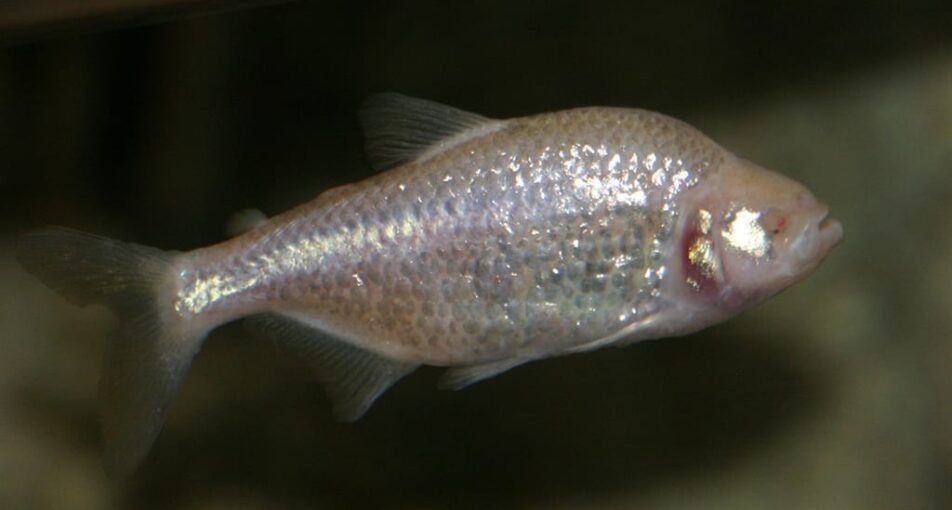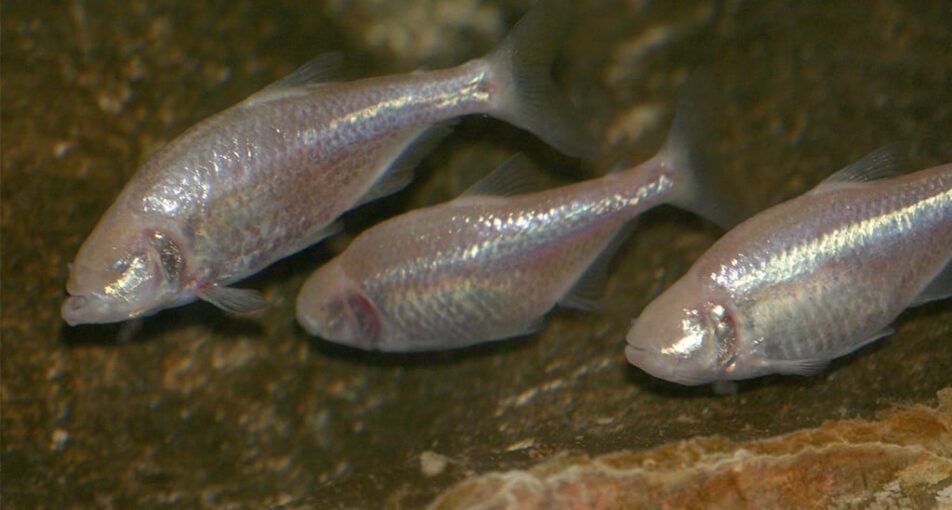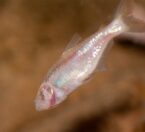Blind cave fish compensate for their lack of sight by having a more sensitive lateral line system which detects vibrations or changes in pressure in the water. The lateral line is a specialized sensory organ found in fish. It is a canal system running just under the skin along each side of the fish’s body.
Classification
| CLASS: | Osteichthyes |
| ORDER: | Characiformes |
| FAMILY: | Characidae |
| GENUS: | Astyanax |
| SPECIES: | mexicanus |
Habitat & Range
This species of fish lives in warm dark caves of freshwater rivers, lakes or pools.
Blind cave fish are found throughout Central America.
Location


Adaptations
Covered with Scales
The blind cave fish has skin covered with a layer of scales arranged in head-to-tail pattern, similar to shingles on a roof. These scales play a protective role for the fish and reduce drag when swimming. Fish also secrete a layer of mucus that covers their body, further reducing drag in the water. The mucus also helps prevent infection by serving as a barrier to microorganisms and also makes the fish slippery and difficult for predators to catch.
Detecting Vibrations
Blind cave fish compensate for their lack of sight by having a more sensitive lateral line system which detects vibrations or changes in pressure in the water. The lateral line is a specialized sensory organ found in fish. It is a canal system running just under the skin along each side of the fish’s body. This canal is lined with special receptors that are quite sensitive to vibrations and water currents and thus it is an “extended sense of touch” allowing the blind cave fish to detect obstacles at a distance. Using this heightened sense helps blind cave fish find food and avoid bumping into obstacles.
Physical Description
- Blind cave fish grow up to three and a half inches (8.9 cm) long. Females are slightly larger and plumper than males.
- Their minnow-shaped body lacks pigment, leaving it cream or light pink in color.
- They have scales on their body.
- Their eye sockets are covered with scales and appear as dark spots.
- These fish have small adipose fin present between the dorsal and caudal fins.
Diet
What Does It Eat?
In the wild:
Blind cave fish are excellent scavengers and will eat almost anything. They often feed on animal and plant remains swept into caves
At the zoo:
Flake fish food.
What Eats It?
Other larger fish prey on blind cave fish.

Social Organization
Blind cave fish are found in large groups called “schools.”
Life Cycle
The blind cave fish has an elaborate courtship during which the male and female make exaggerated movements of the mouth and gills. Presumably the turbulence these movements produce helps the fish locate a partner; male and female swim side-by-side and then mate. Fertilized eggs sink to the bottom where they stick to rocks. Blind cave fish growing within eggs have normally developing eyes early on, but the eyes will start to degenerate within the egg. The fish may be born blind or it may be born with functional eyes which later cloud over and shrink because there is no light in the dark caves and eyesight is not necessary. The lifespan of the blind cave fish is approximately ten years.













